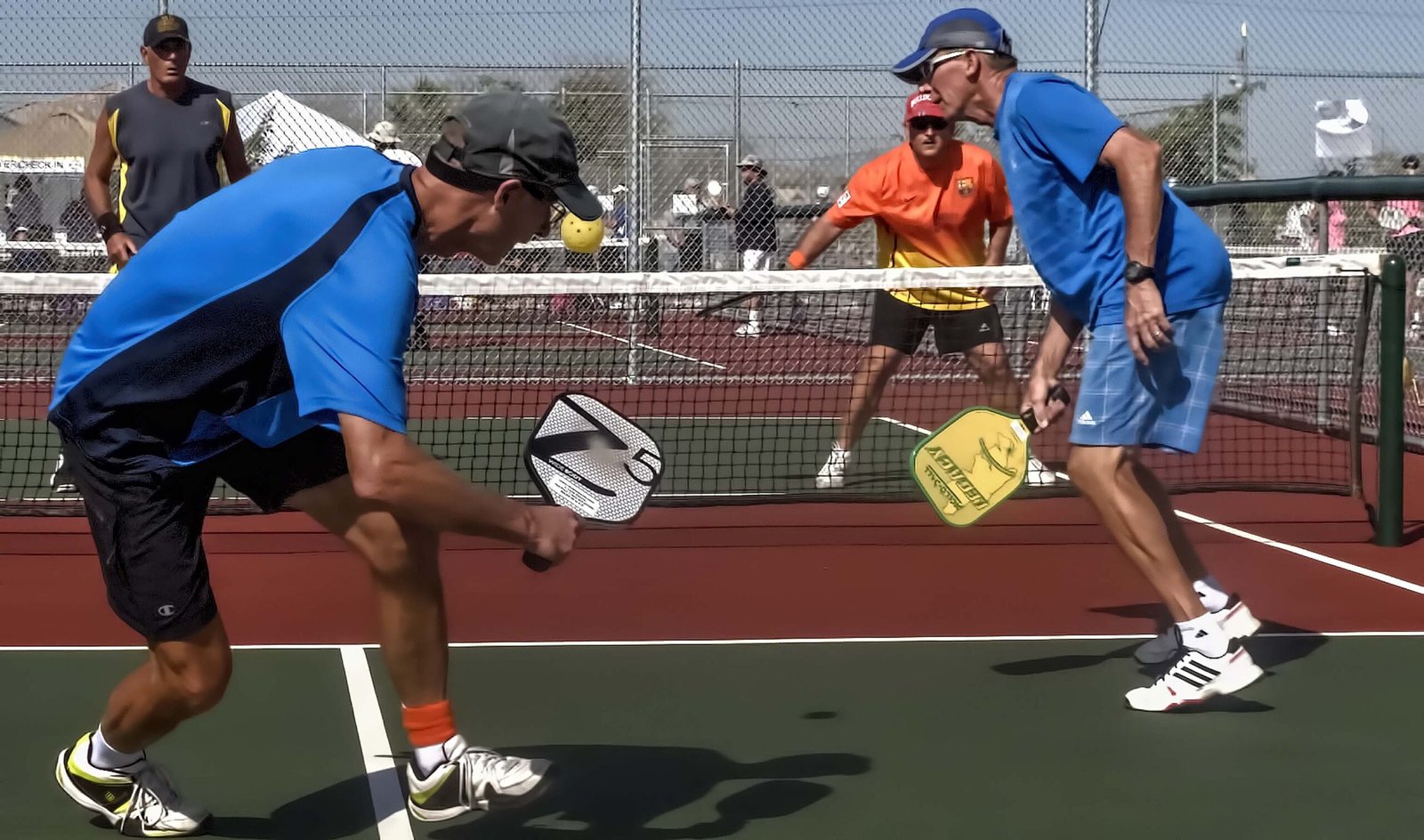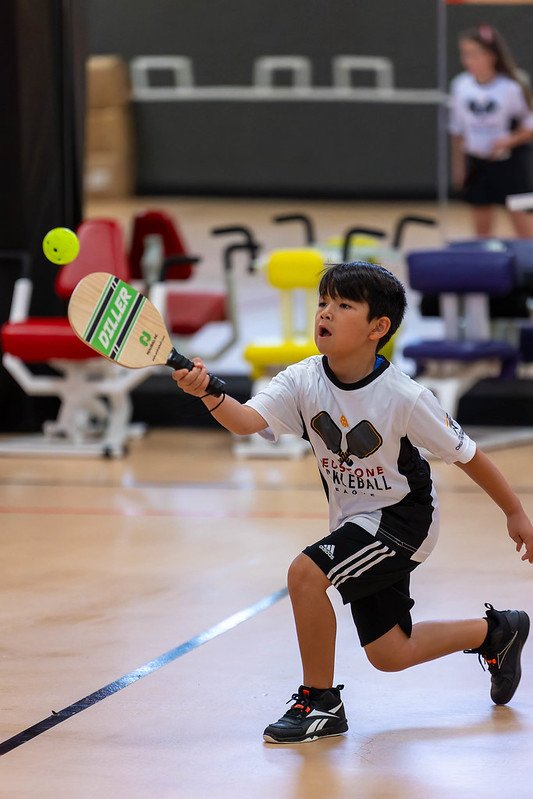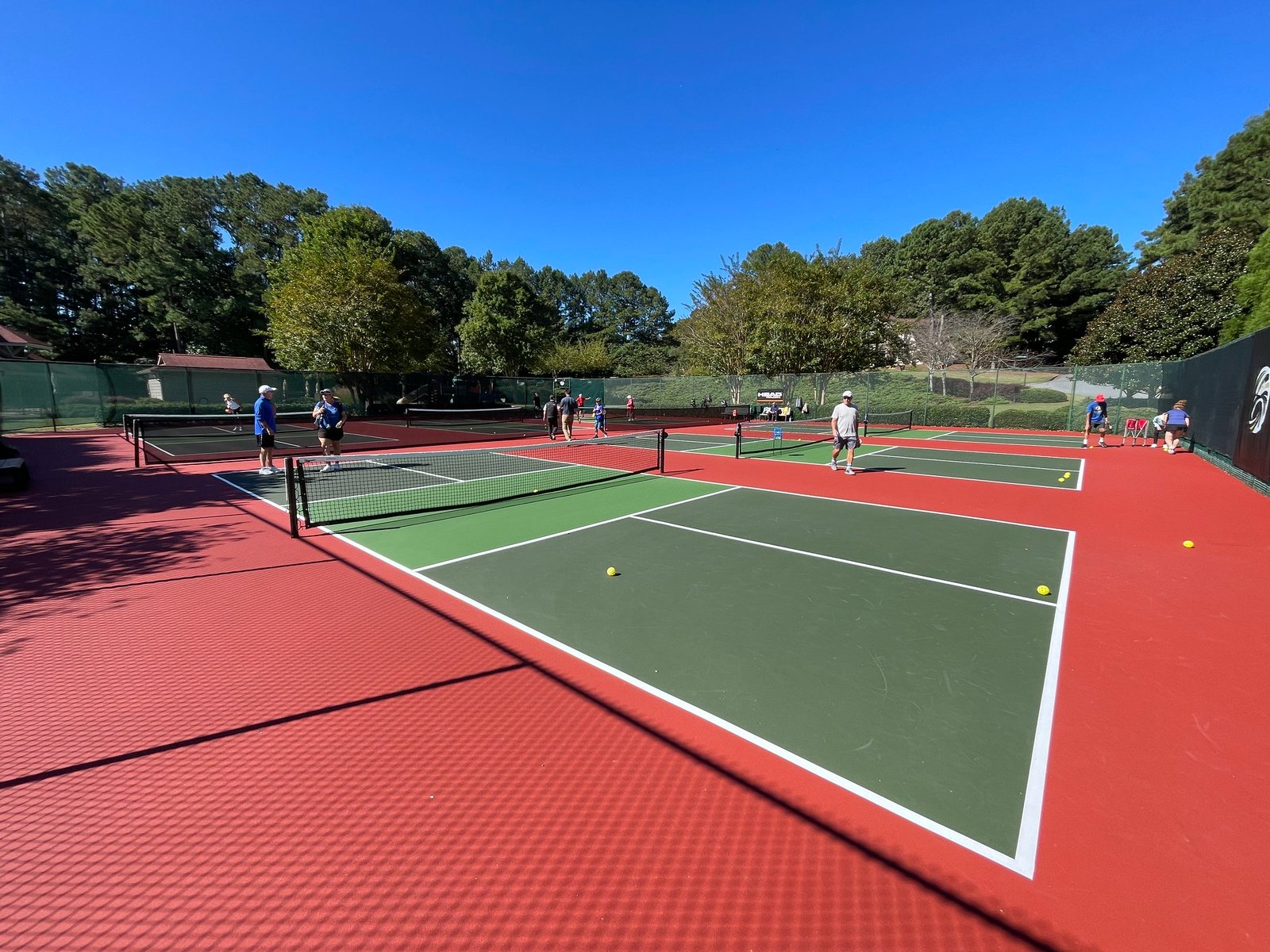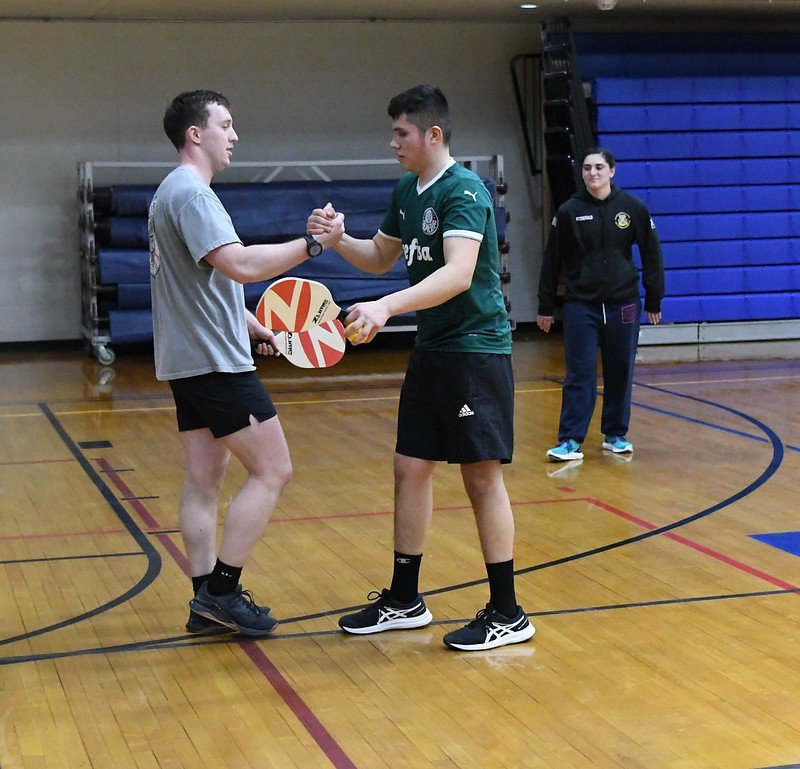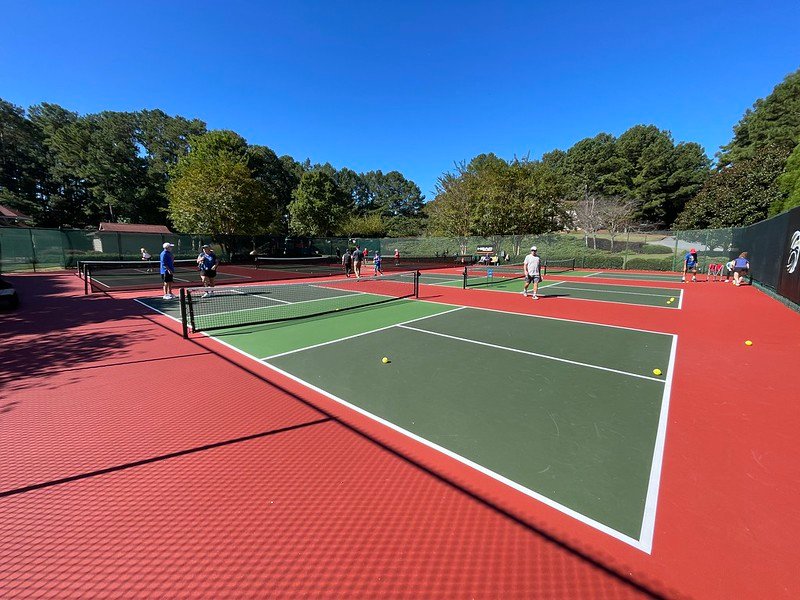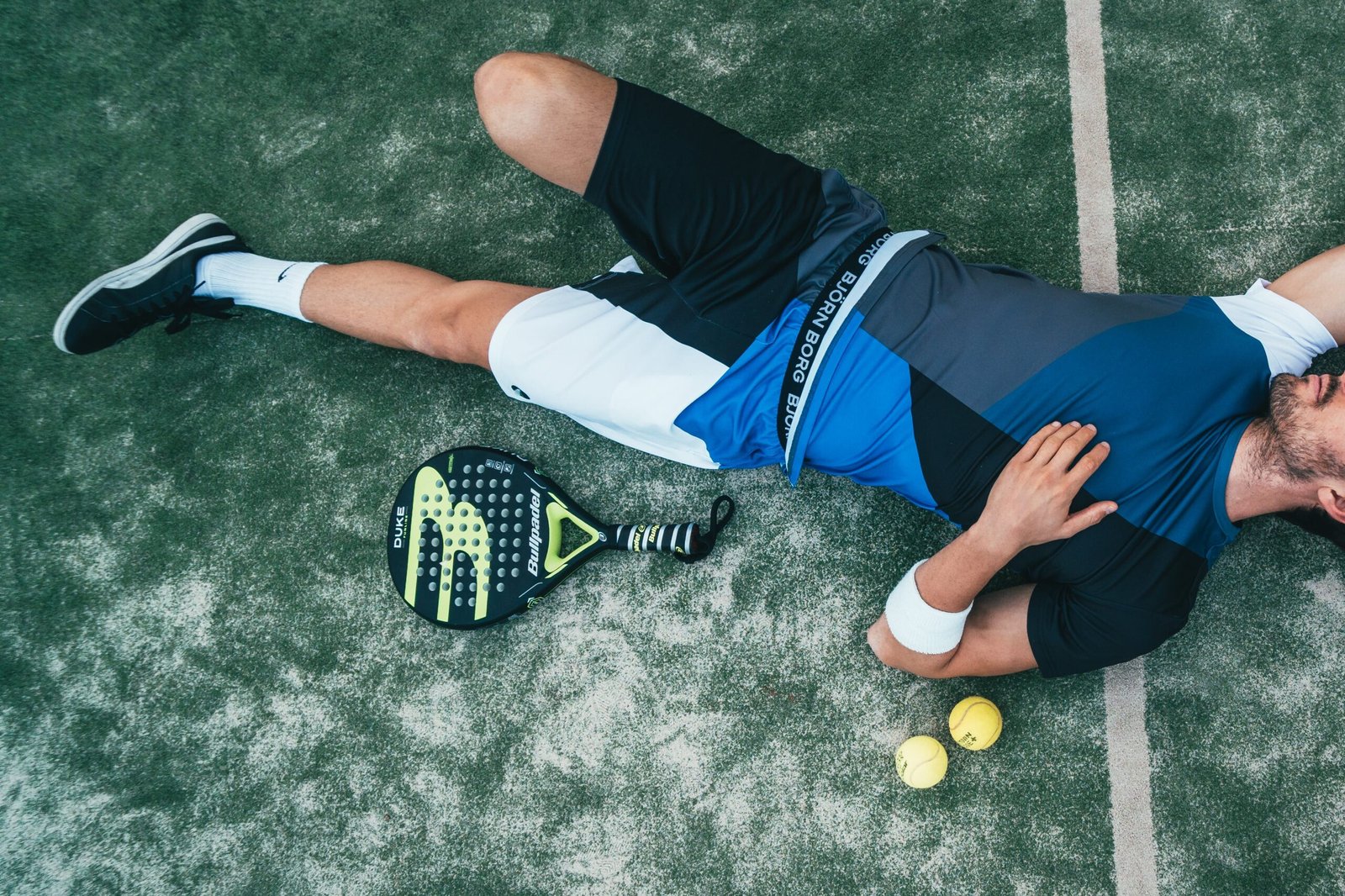Pickleball, often described as the fastest-growing sport in America, is a delightful and engaging racket sport that combines elements of tennis, badminton, and table tennis. Whether you’re a beginner looking to explore this exciting game or a seasoned player aiming to brush up on pickleball rules, you’ve come to the right place. In this comprehensive guide, we will delve into the ins and outs of pickleball, providing you with a thorough understanding of the game and its rules.
Pickleball is played on a rectangular court divided by a net, but what truly sets it apart is its unique blend of agility, strategy, and finesse. It’s a game that can be enjoyed by people of all ages and skill levels, making it an inclusive and accessible sport.
Its rules are at the heart of any sport, and pickleball is no exception. This guide will walk you through the key rules of pickleball, ensuring you’re well-equipped to confidently step onto the court. From serving regulations to scoring intricacies, we’ll cover it all. Whether you’re curious about the double bounce rule, eager to master your serves, or simply looking to understand the non-volley zone (commonly known as “the kitchen”), you’ll find clear explanations and insights here.
Beyond the rules, we’ll explore the strategic aspects of the game. Pickleball is not just about hitting the ball back and forth; it’s about positioning, teamwork (in doubles play), shot selection, and finesse. Discover techniques to improve your game, whether you’re striving for precision shots, powerful volleys, or effective net play.
Our guide will also look closely at some of the more intricate aspects of pickleball rules. We’ll address common questions, clarify nuances, and provide tips to avoid common mistakes that can lead to faults.
Whether you’re a newcomer intrigued by the game of pickleball or a seasoned player seeking to enhance your understanding of the rules, our comprehensive guide will equip you with the knowledge and skills needed to enjoy and excel at this fast-paced and exciting sport. So, let’s dive into pickleball and unlock the secrets to becoming a skilled and knowledgeable player.
Table of Contents
What is pickleball, and why is it called that?
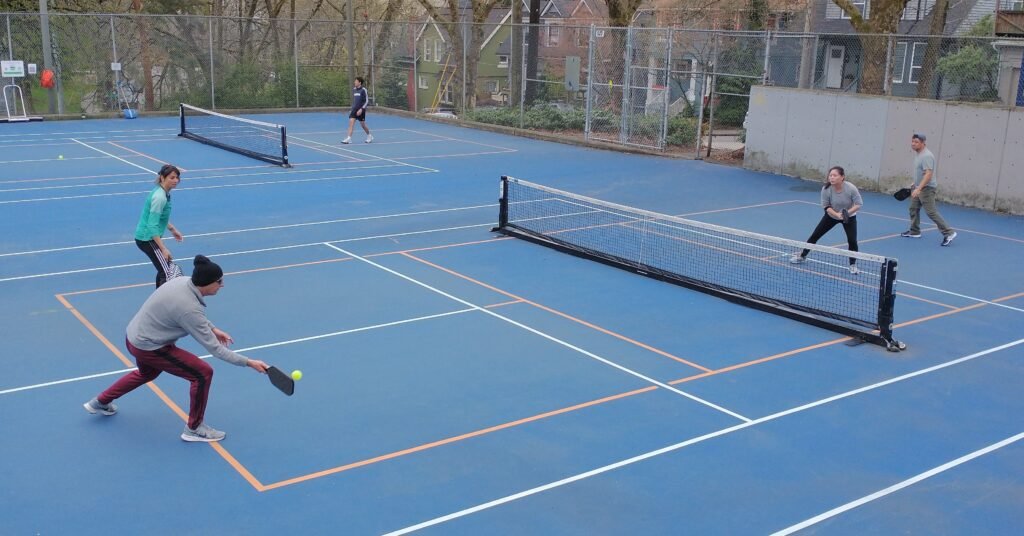
Pickleball, a unique and increasingly popular racket sport, is often described as one of the most accessible and enjoyable games for people of all ages. It combines elements of tennis, badminton, and table tennis, played on a smaller court with a solid paddle and a plastic perforated ball.
The game’s name, “pickleball,” is as intriguing as the sport, and its origin story adds a touch of whimsy to its identity.
Pickleball was invented in 1965 by three friends: Joel Pritchard, Bill Bell, and Barney McCallum. The game’s birthplace is Bainbridge Island, near Seattle, Washington. Legend has it that the sport’s name has two potential sources related to the family dog.
The most commonly accepted origin story is that Pritchard’s dog, Pickles, was fond of chasing after the ball during their early games. Thus, they affectionately named their new sport “pickleball” to honor their four-legged companion.
Another theory suggests that the name originates from the “pickle boat” term in rowing. In rowing, a pickle boat is a vessel that combines oarsmen from different teams, much like how pickleball combines elements from various sports. This theory, however, is less popular than the dog-related one.
Regardless of its precise origins, the name “pickleball” has stuck, and the sport has flourished over the years. Today, pickleball is played in community centers, schools, retirement communities, and professional tournaments worldwide. Its appeal lies in its accessibility, low entry barriers, and the ease with which players of all skill levels can enjoy it.
In essence, pickleball is a testament to the joy of innovation, combining elements of other sports into a new and engaging game that brings people together. So, whether you’re a seasoned player or a newcomer, the allure of pickleball lies in its simplicity, inclusivity, and the enduring mystery behind its quirky name. 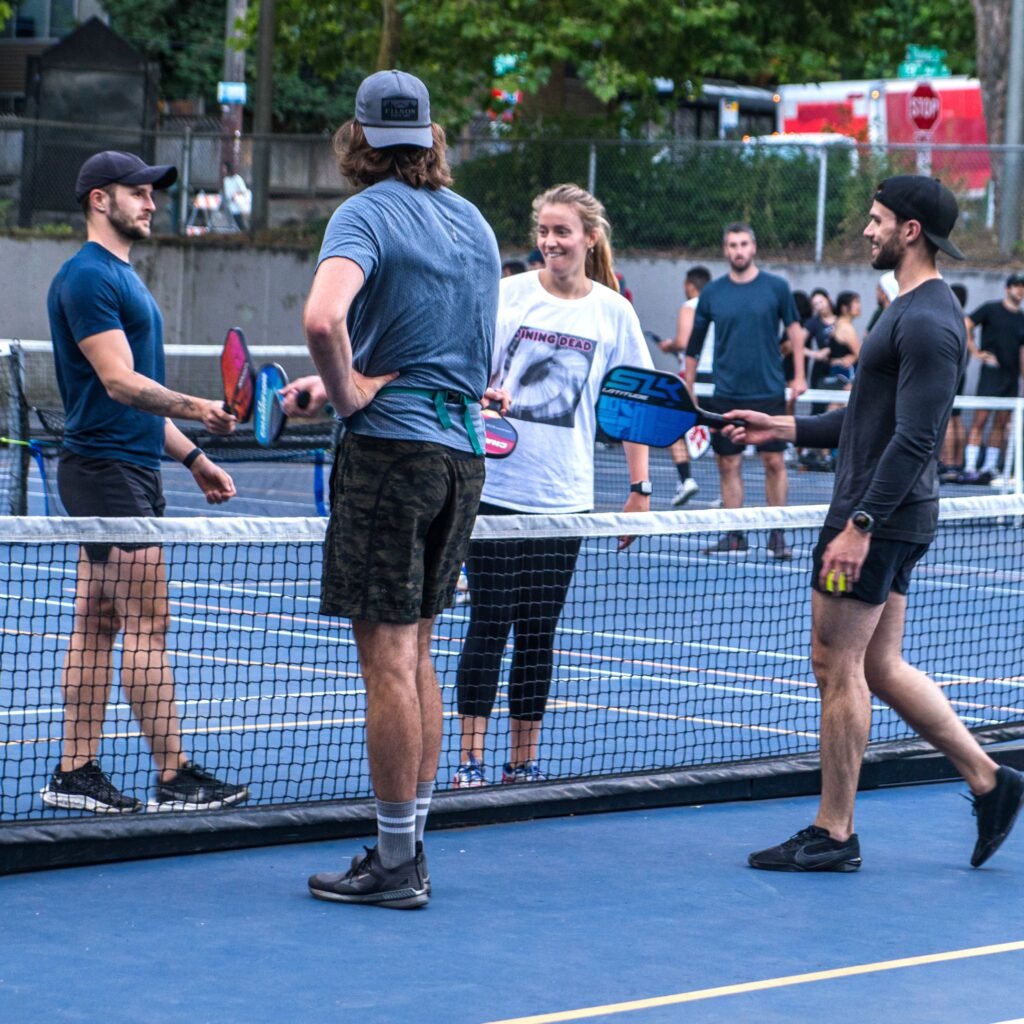
Why is pickleball so popular all of a sudden?
Pickleball’s rapid and recent surge in popularity can be attributed to a confluence of factors that have made it a sensation in the world of sports and recreation. Here are some key reasons pickleball has gained such widespread acclaim in recent years:
Accessibility
Pickleball is incredibly accessible. It’s easy to learn, doesn’t require an extensive investment in equipment, and can be played on smaller courts. People of all ages and fitness levels can quickly pick up the basics and enjoy competitive play, making it an ideal sport for families, seniors, and beginners.
Health and Fitness Trends
In an era where health and fitness have taken center stage, pickleball offers a physically engaging and low-impact activity. It provides cardiovascular exercise, improves balance, and promotes overall well-being, aligning with the growing emphasis on healthy lifestyles.
Social Connection
Pickleball is a highly social sport. It’s often played in doubles, fostering camaraderie and a sense of community. The game’s social aspect, along with the opportunity to make new friends, has made it appealing to individuals seeking connection.
Prominent Endorsements
The sport has garnered attention from prominent athletes and celebrities, further boosting its visibility. When well-known figures embrace pickleball, it attracts the interest of their fan base and the media.
Facility Adaptation
Many existing sports facilities, such as tennis and racquetball courts, have adapted to accommodate pickleball. This has made it easier for players to access courts and equipment.
Pandemic-Resistant
During the COVID-19 pandemic, pickleball’s outdoor nature and adaptability for social distancing made it one of the few sports that could be safely enjoyed. This led to a surge in participation as people sought safe recreational activities.
Organized Play and Tournaments
The growth of organized leagues and tournaments at local, national, and international levels has heightened the competitive aspect of pickleball. This has attracted players looking for a new challenge.
Marketing and Promotion
Increased marketing efforts and online exposure through social media platforms, websites, and instructional videos have raised awareness about pickleball.
In essence, pickleball’s popularity can be attributed to its accessibility, health benefits, social appeal, and adaptability, all of which have contributed to a perfect storm of factors that have propelled it into the spotlight in recent years. As more people discover the joys of pickleball, its upward trajectory in popularity shows no signs of slowing down.
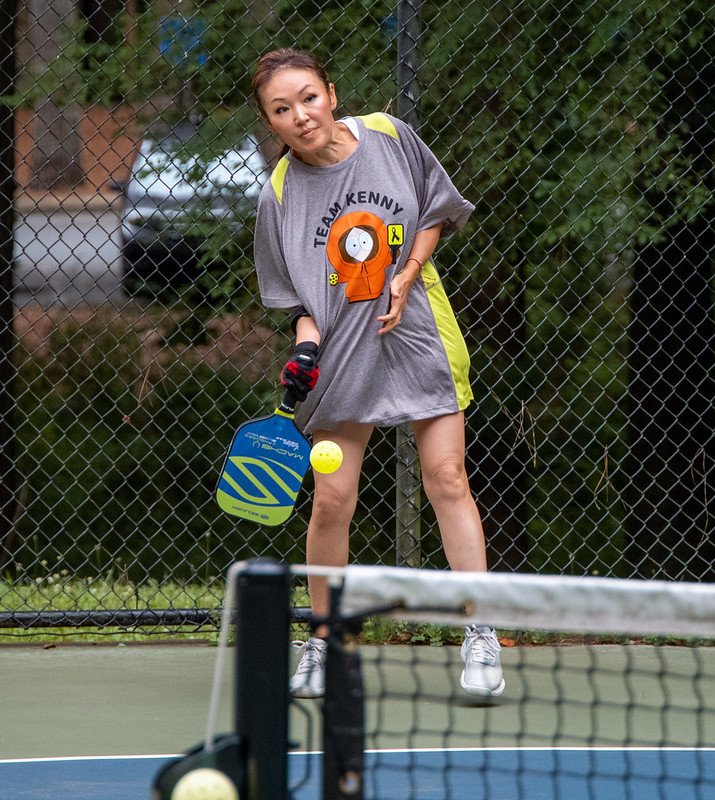
Rules of Pickleball
Pickleball is a fun, fast-paced racket sport that combines elements of tennis, badminton, and table tennis. It is typically played on a rectangular court with a net in the middle. Here are the general rules of the game of pickleball in detail:
Court Dimensions
Pickleball, a rapidly growing racket sport, features distinct court dimensions for both doubles and singles play. In doubles play, the court spans a width of 20 feet and a length of 44 feet. This generous space allows for dynamic teamwork and strategic positioning between the two-player teams on either side of the net.
For singles play, the dimensions are slightly altered to create a more intimate playing environment. The court remains 20 feet wide but is reduced in length to 22 feet. This adjustment demands increased agility and precision from the individual player, as they have less space to cover, making for a more physically demanding and strategically nuanced game.
The net, a crucial element in pickleball, is suspended at 36 inches at the sidelines and slightly lower, at 34 inches, at the center. This unique net height variation introduces an additional layer of challenge and strategy, particularly in the serving and volleying aspects of the game, as players must adapt to the changing net height across the court.
These specific court dimensions and net heights in pickleball contribute to the sport’s distinctive character, blending elements of various racket sports while creating an environment that rewards teamwork and precision in doubles play and agility and strategy in singles play.
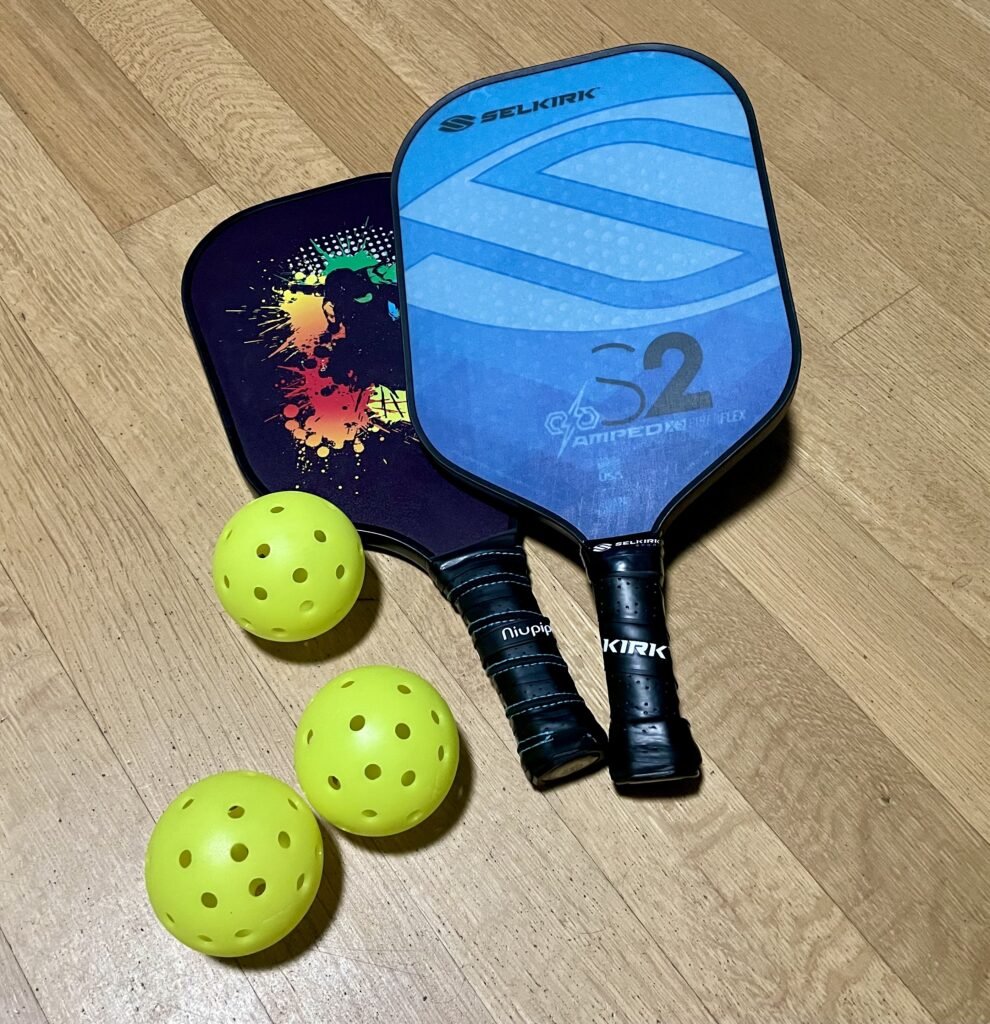
Equipment for Pickleball
In pickleball, players wield a solid paddle that can be crafted from various materials, including wood, composite, or graphite. These paddle materials offer distinct advantages and cater to players with different preferences and skill levels.
Wooden Paddles
Wooden paddles are often favored by beginners and recreational players. They provide a softer touch, offering better control and precision for those still honing their skills. Wooden paddles are also known for their affordability, making them an excellent choice for those new to the sport.
Composite Paddles
Composite paddles are popular among intermediate to advanced players. They typically consist of a combination of materials like fiberglass, carbon fiber, or polymer. These paddles balance power and control, allowing players to execute a wider range of shots with finesse.
Graphite Paddles
Graphite paddles are the top choice for many competitive players due to their lightweight and high-performance properties. Graphite offers excellent power and responsiveness, making generating faster shots and precise placement on the court easier. These paddles are often preferred in competitive tournaments for their superior maneuverability.
In addition to the paddle diversity, pickleball employs a plastic perforated ball similar to a wiffle ball. This unique ball design features holes that reduce air resistance, allowing for controlled flight patterns and facilitating longer rallies. The plastic construction also ensures durability, minimizing the need for frequent ball replacements during play.
The choice of paddle and ball in pickleball depends on a player’s skill level, playing style, and personal preferences. Whether one opts for wood, composite, or graphite paddles or utilizes the distinctive perforated ball, the sport’s equipment diversity caters to a wide range of players, contributing to the sport’s inclusivity and adaptability for all skill levels.
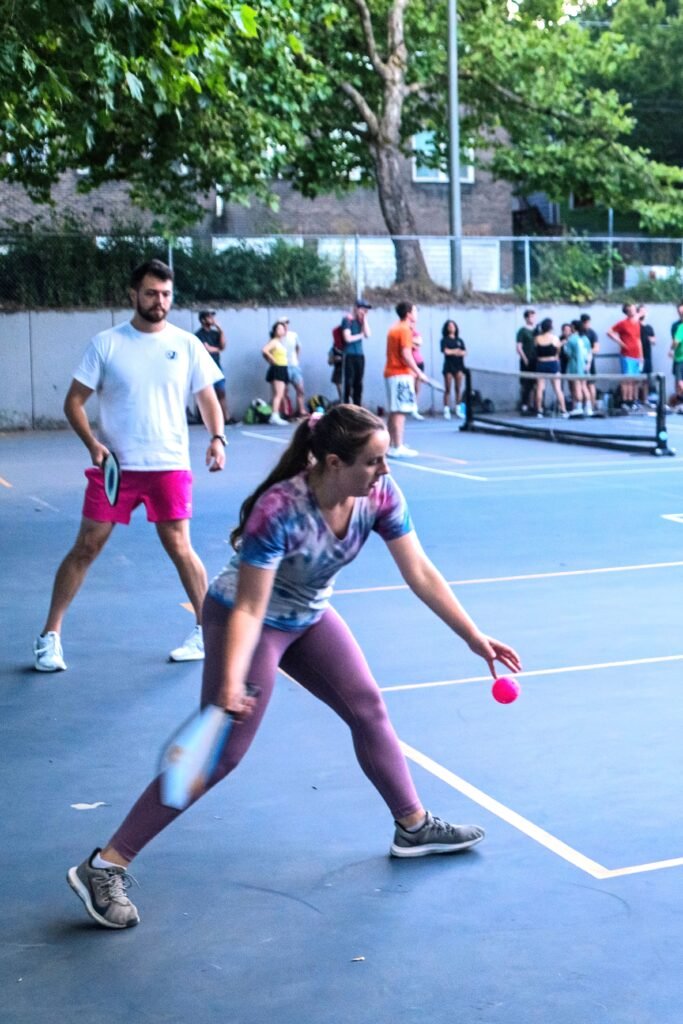
Serving
In pickleball, the precise serving rules play a crucial role in the game’s dynamics. Here’s a breakdown of these key serving regulations:
Position Behind the Baseline
The serving team must stand behind the baseline on their side of the court. This positioning ensures the serve is initiated from the designated area, allowing for a fair and consistent start to each point.
Diagonal Service
The server must execute a diagonal serve, sending the ball across the net to the opponent’s service box, which is diagonally opposite. This rule encourages players to engage in movement and strategic positioning on the court, adding depth and complexity to the game.
Clearance of the Non-Volley Zone
The serve must clear the non-volley zone, commonly called “the kitchen.” This rule prevents servers from gaining an unfair advantage by serving from too close to the net. It promotes balanced gameplay and prevents aggressive net approaches during serves.
Underhanded Serve Below Waist
The serve must be executed underhanded, with the paddle hand moving upward. This rule eliminates the potential for overly aggressive serves and enhances control over the ball. Furthermore, serving below the waist ensures a consistent and fair standard for all players.
One Attempt and Rotation
Players are allowed only one attempt at the serve. If the serve is unsuccessful, a side-out occurs, and the serving team loses the opportunity to score a point on that serve. After a side-out, the server rotates to the other side of the court, ensuring equal opportunities for both teams.
These serving rules are designed to maintain fairness, encourage strategic play, and contribute to the overall enjoyment of pickleball. They are fundamental to the sport’s character and help create a level playing field for players of varying skill levels.
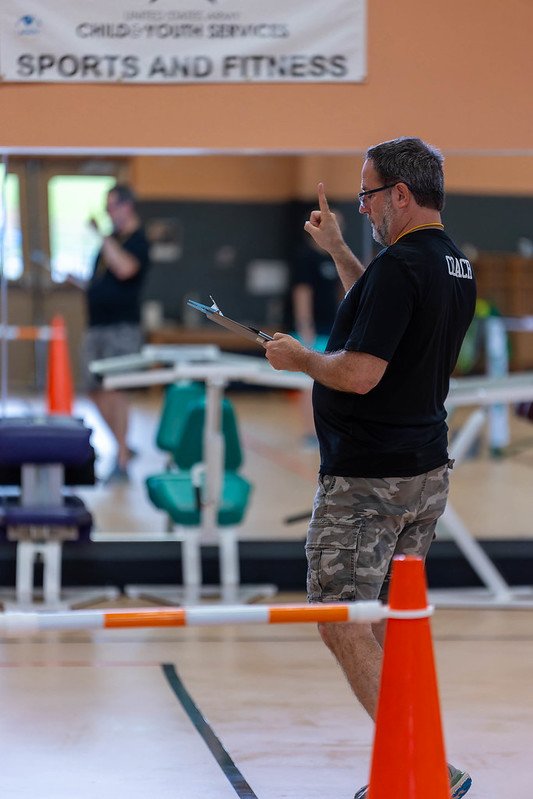
Scoring
In pickleball, the scoring system is based on a rally scoring format, a game’s defining feature. This means that points can be earned by either the serving or receiving team, adding excitement and competitive balance to every rally.
Points are scored when the opposing team commits a fault, such as hitting the ball out of bounds, into the net, or violating other established rules. This scoring approach promotes strategic and cautious play, encouraging players to capitalize on their opponents’ errors.
Games in pickleball are typically played to 11 points, and the winning team must secure a lead of at least 2 points. This ensures a decisive victory and prevents games from continuing indefinitely. However, tournament play may utilize a 15-point or 21-point scoring system, offering variations to suit specific competitive environments or preferences. The flexibility in scoring systems allows for adaptability and accommodates various levels of play, making pickleball an inclusive and engaging sport for all.
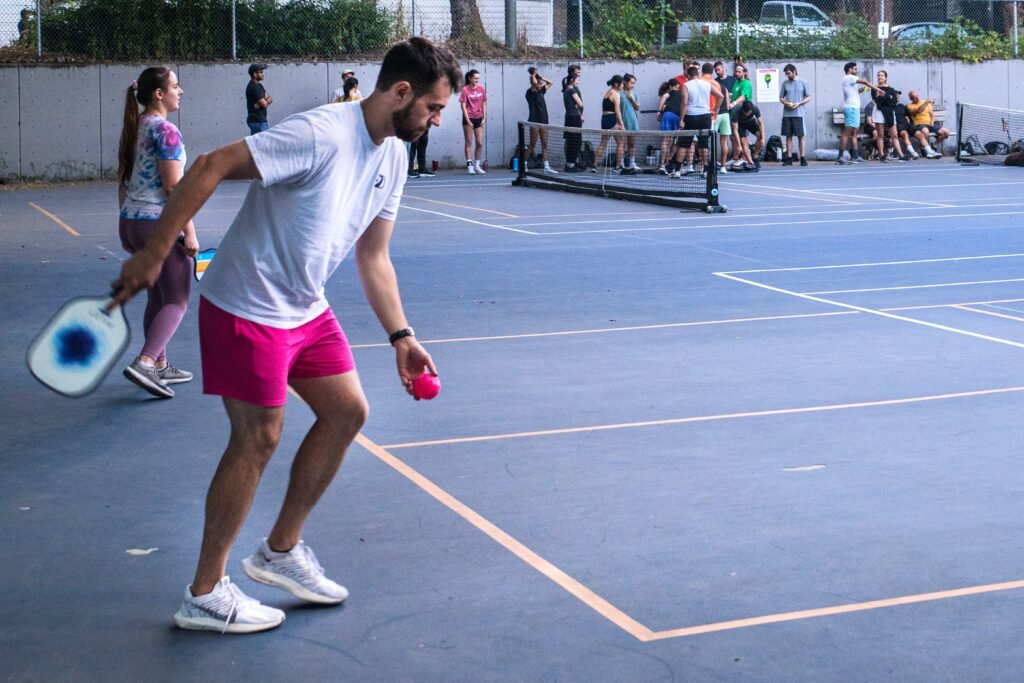
Non-Volley Zone (Kitchen)
The non-volley zone, affectionately known as “the kitchen” in pickleball, is vital to the game’s rules and strategy. It spans a 7-foot area adjacent to the net on both sides of the court. This zone is strategically placed to prevent players from executing volleys (hitting the ball in the air without it bouncing) while positioned within it.
The kitchen rule serves several essential purposes. It encourages players to engage in longer rallies by requiring them to allow the ball to bounce before attempting a volley shot. This results in more strategic and tactical play, as players must anticipate the ball’s bounce and placement. It also promotes fairness, as it prevents players from dominating the net with constant volleys.
However, the rule also allows players to enter the kitchen to play the ball after it has bounced. This means that players can move into the kitchen to retrieve a low-bouncing ball, adding an element of agility and quick reactions to the game. Balancing the restrictions and allowances within the kitchen contributes to the dynamic and strategic nature of pickleball, making it an engaging and enjoyable sport for players of all levels.
Double Bounce Rule
In pickleball, the two-bounce rule is a fundamental aspect of the game that adds depth and strategy to each point. This rule stipulates that at the beginning of a point, each team must allow the ball to bounce once on their side of the net before they can initiate volleys (hitting the ball in the air without it bouncing).
The two-bounce rule serves several important purposes in pickleball:
Fair Start
It ensures that each point begins with a balanced and fair start, as both teams have an equal opportunity to return the serve and engage in the rally.
Placement and Strategy
By requiring the ball to bounce twice initially, players must strategically position themselves to anticipate the ball’s trajectory and plan their shots accordingly. This adds a tactical element to the game.
Safety
The rule enhances safety on the court, particularly for less experienced players. Allowing the ball to bounce first reduces the speed and force of initial shots, minimizing the risk of injury.
Extended Rallies
The two-bounce rule often leads to longer rallies, showcasing skill and finesse as players engage in precise placement and shot selection rather than relying solely on power.
Volleys are permitted once the initial two bounces have occurred, and the game’s pace typically accelerates. This rule encourages a balance between controlled shots and volleying prowess, making pickleball a sport that values skill and strategy while maintaining a level playing field for players of varying abilities.
Faults
In the sport of pickleball, several common faults can occur during a match, each resulting in the opposing team being awarded a point. One prevalent fault is hitting the ball out of bounds, where the pickleball lands outside the designated court boundaries. This error often happens when players misjudge the ball’s trajectory or power.
Another common fault is hitting the ball into the net. This can occur during serves, volleys, or groundstrokes when players fail to clear the net with their shot. The net is a crucial obstacle in pickleball, and shots failing to clear it result in points for the opposing team.
Volleying from within the kitchen, also known as the non-volley zone, is another frequent fault. Players are not allowed to make volleys or play shots directly at the net while standing inside this area, which is a strategic part of, the game.
Furthermore, stepping on or into the kitchen during a volley is considered a fault. The kitchen is a high-traffic zone where players must exercise caution to avoid committing this mistake.
These faults are crucial to understanding pickleball as they directly impact the game’s score, making it essential for players to develop precise control and court awareness to minimize their occurrence.
Switching Sides
In doubles play, particularly in games like tennis, badminton, and table tennis, teams engage in strategic rotations to ensure fairness and equal opportunities for both sides. A side switch occurs at the commencement of each game and once the leading team reaches 6 points. This rotation serves several crucial purposes.
Firstly, it helps eliminate any potential advantage gained from environmental factors such as sun, wind, or court conditions. Both teams have a fair chance to deal with these variables by switching sides.
Secondly, it minimizes any psychological or strategic advantages one team may gain from a specific side of the court. Different angles and perspectives can affect how a game is played, so switching sides ensures that both teams adapt to these changes.
Lastly, the switch promotes sportsmanship and fairness. It reinforces the idea that the game’s outcome should depend on skill and teamwork rather than environmental factors or positional advantages, thereby enhancing the integrity of the sport and ensuring an enjoyable and equitable experience for all players.
Let Serves
In pickleball, when a serve hits the net and lands in the opponent’s service box, it is called a “let.” This term, borrowed from tennis, signifies a situation in which the serve is replayed without awarded or lost points. The let rule has several important implications:
Overall, the let rule in pickleball helps maintain equity and courtesy on the court, ensuring that unforeseen circumstances like net-cord serves do not disrupt the game’s integrity.
Faults on the Serve
In pickleball, adhering to serving rules is paramount, and any fault committed by the server can result in a significant consequence. One such fault occurs when the server commits an infraction like stepping on the baseline or violating other serving regulations. When this happens, the server forfeits their opportunity to serve, and the opponent is awarded a point.
Ultimately, the consequence of losing the serve and awarding a point to the opponent for a serving fault emphasizes the importance of precise and fair play in pickleball while fostering an environment of sportsmanship and adherence to the game’s established rules.
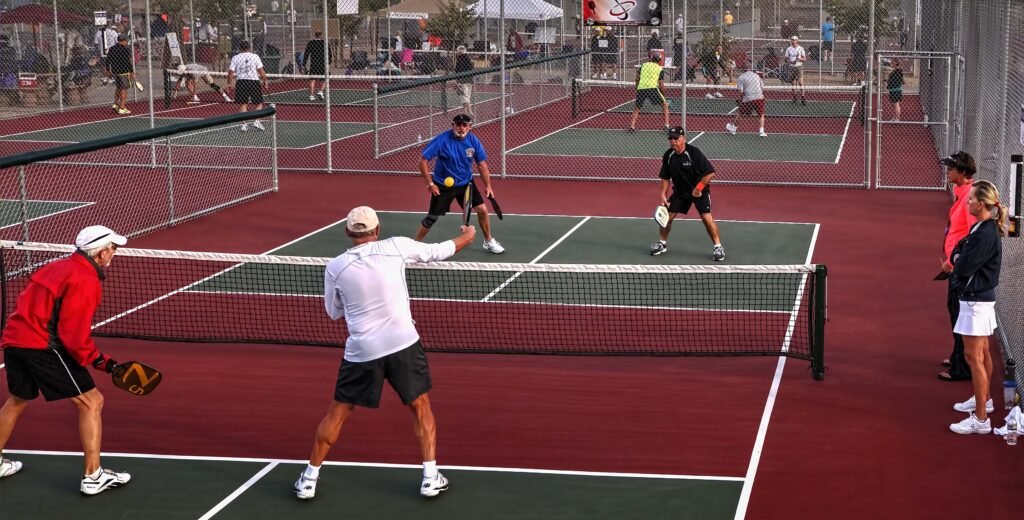
Winning the Match
In pickleball, a standard match format typically consists of the best of three games. This means that the first team or player to win two out of three games emerges victorious in the match.
This format provides several advantages:
Competitive Balance
Best-of-three games ensure the match is competitive and engaging. It allows for potential comebacks, creating excitement and suspense for players and spectators alike.
Fairness
The format reduces the likelihood of a single game overly influencing the outcome of the entire match. Winning two out of three games requires sustained performance and consistency, ensuring that the better team or player prevails.
Time Efficiency
Best-of-three games balance maintaining an enjoyable match duration and allowing players ample opportunities to showcase their skills. It ensures that matches are brief.
Variety
The format encourages different strategies and tactics as players adjust their gameplay over the course of the match, making each game a unique challenge.
By requiring two wins to secure the match, the best-of-three format exemplifies the essence of pickleball, where skill, strategy, and adaptability combine to determine the ultimate victor. It also contributes to the sport’s appeal, making it accessible and engaging for players at all levels.

Sportsmanship
Pickleball’s reputation for sportsmanlike conduct and the expectation of players to uphold a code of fair play and good sportsmanship are central to the spirit of the game. This ethos sets pickleball apart as a sport that values not only competition but also respect and camaraderie among participants.
In pickleball, good sportsmanship is evident in various ways:
Respect for Opponents
Players are expected to show respect for their opponents, recognizing that everyone is there to enjoy the game. This includes acknowledging good shots, applauding opponents’ successes, and maintaining a positive attitude, win or lose.
Honesty
Honesty is a fundamental aspect of sportsmanship in pickleball. Players are responsible for making accurate line calls and owning up to any infractions or faults.
Controlled Emotions
Managing emotions, such as frustration or anger, is vital in pickleball. Players are encouraged to keep their composure and avoid unsportsmanlike conduct, which can detract from the game’s enjoyment.
Supportive Environment
Players often create a supportive and welcoming environment for all skill levels. This inclusivity fosters community and encourages new players to join and learn.
Adherence to Rules
Good sportsmanship involves playing within the rules and adhering to the principles of fairness. Players are expected to abide by the established regulations and not behave unsportsmanlike.
Pickleball’s emphasis on sportsmanship contributes to a positive and enjoyable playing experience and promotes the sport’s growth. It attracts participants of all backgrounds and ages, fostering a sense of unity and mutual respect on and off the court. In essence, sportsmanship is an integral part of what makes pickleball a cherished and inclusive sport for people from all walks of life.
While the fundamental rules outlined provide a solid foundation for playing pickleball, it’s crucial to recognize that the sport can exhibit variations and additional rules depending on various factors. These factors may include the level of play, the organization overseeing the game, or specific tournament regulations.
For instance, specific rules might be relaxed or modified in recreational and casual play to accommodate players of different skill levels or physical abilities. However, rules are typically enforced with precision in competitive settings, such as sanctioned tournaments or league play to maintain fairness and consistency.
These additional rules could encompass variations in scoring methods, court dimensions, or even rules related to time limits for points and matches. As such, players seeking to participate in a competitive pickleball environment should thoroughly acquaint themselves with any supplementary regulations specific to the event they are entering. Staying informed and adaptable to these variations ensures a smooth and enjoyable experience while participating in organized pickleball competitions.

